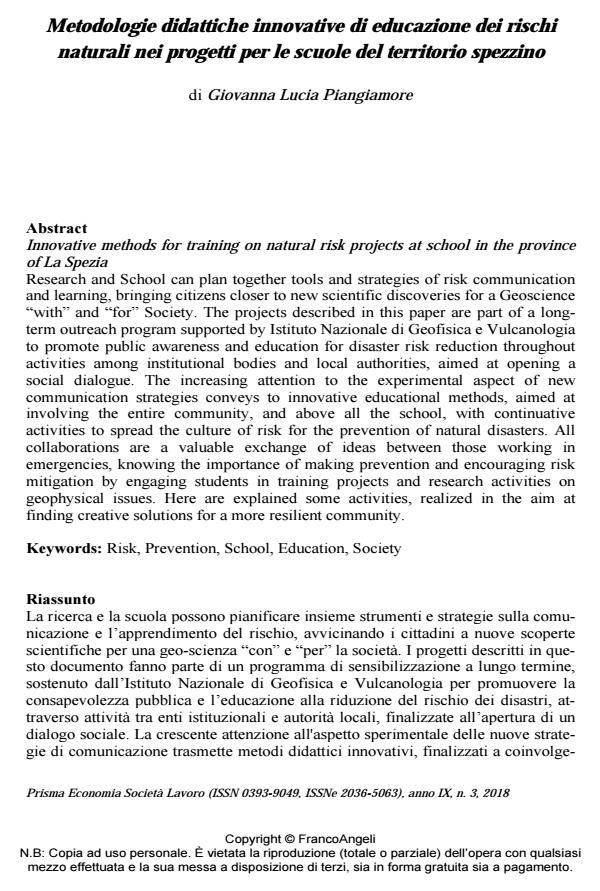Innovative methods for training on natural risk projects at school in the province of La Spezia
Journal title PRISMA Economia - Società - Lavoro
Author/s Giovanna Lucia Piangiamore
Publishing Year 2019 Issue 2018/3
Language Italian Pages 21 P. 113-133 File size 236 KB
DOI 10.3280/PRI2018-003008
DOI is like a bar code for intellectual property: to have more infomation
click here
Below, you can see the article first page
If you want to buy this article in PDF format, you can do it, following the instructions to buy download credits

FrancoAngeli is member of Publishers International Linking Association, Inc (PILA), a not-for-profit association which run the CrossRef service enabling links to and from online scholarly content.
Research and School can plan together tools and strategies of risk communication and learning, bringing citizens closer to new scientific discoveries for a Geoscience "with" and "for" Society. The projects described in this paper are part of a long-term outreach program supported by Istituto Nazionale di Geofisica e Vulcanologia to promote public awareness and education for disaster risk reduction throughout activities among institutional bodies and local authorities, aimed at opening a social dialogue. The increasing attention to the experimental aspect of new communication strategies conveys to innovative educational methods, aimed at involving the entire community, and above all the school, with continuative activities to spread the culture of risk for the prevention of natural disasters. All collaborations are a valuable exchange of ideas between those working in emergencies, knowing the importance of making prevention and encouraging risk mitigation by engaging students in training projects and research activities on geophysical issues. Here are explained some activities, realized in the aim at finding creative solutions for a more resilient community.
Keywords: Risk, Prevention, School, Education, Society
Giovanna Lucia Piangiamore, Metodologie didattiche innovative di educazione dei rischi naturali nei progetti per le scuole del territorio spezzino in "PRISMA Economia - Società - Lavoro" 3/2018, pp 113-133, DOI: 10.3280/PRI2018-003008